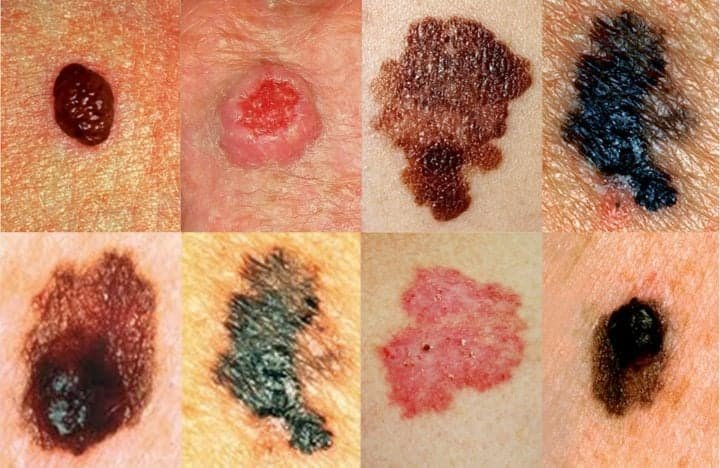
Skin cancer is one of the most common cancers in the world. Millions of new cases are reported each year and the number continues to rise. Understanding the differences between melanoma and other skin cancers, as well as knowing how to diagnose them early, is key to timely treatment and a better prognosis.
Melanoma
The most aggressive type of skin cancer that develops from melanocytes, the cells that produce the pigment melanin.Although melanoma accounts for only 5-10% of all skin malignancies, it tops the list of causes of death from skin malignancies.
Basal cell carcinoma (BCC)
The most common type, accounting for about 2/3 of all skin cancers. It develops from the basal cells of the epidermis and rarely metastasizes.
Squamous cell carcinoma (SCC)
Comprises about 1/3 of all skin cancers. It develops from keratinocytes and can metastasize if not treated in a timely manner. How to distinguish melanoma from other skin growths?
The ABCDE rule is used to self-assess moles and other skin growths.
Additional symptoms to look out for include itching, bleeding, inflammation, and rapid increase in size.Unlike melanoma, benign lesions usually have clear borders, uniform color, and are stable in size.
Dermatoscopy
The first step in the examination, allowing a detailed study of the structure of the skin formation with the help of a special device.
Biopsy and histologic analysis
The main method of diagnosis, in which a suspicious mass is removed and examined under a microscope to determine its nature.
Use of AI algorithms
Modern technologies, such as mobile applications with artificial intelligence, help in the preliminary assessment of skin masses and can recommend to consult a specialist at suspicious signs.
Surgical removal
The main method of treatment in which the tumor is excised with healthy tissue to prevent recurrence.
Immunotherapy and targeted therapies
Used to treat melanoma, especially in advanced stages, aim to stimulate the immune system or target specific molecules in tumor cells.
Photodynamic therapy and cryodestruction
Used to treat BCC and SCC, especially superficial forms, using light or low temperatures to kill tumor cells.
Early detection of melanoma and other skin cancers plays a key role in successful treatment and improved prognosis. Understanding the differences between skin cancer types, knowing the symptoms and diagnostic methods, and following preventive measures will help keep you healthy and alive.